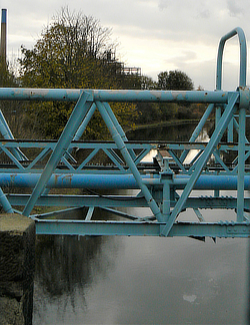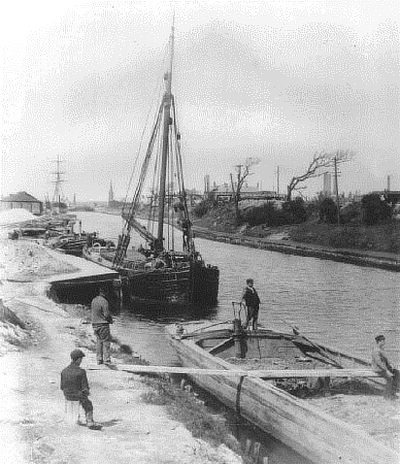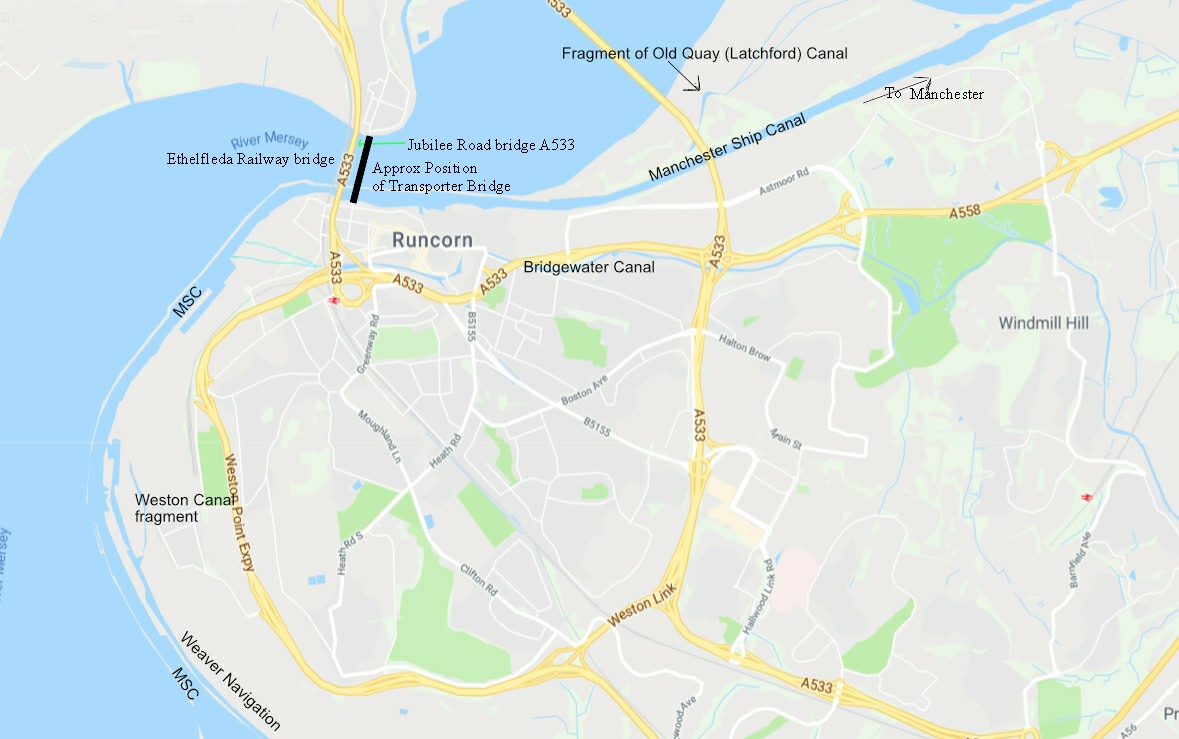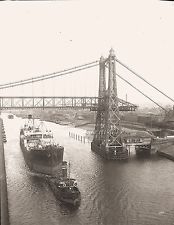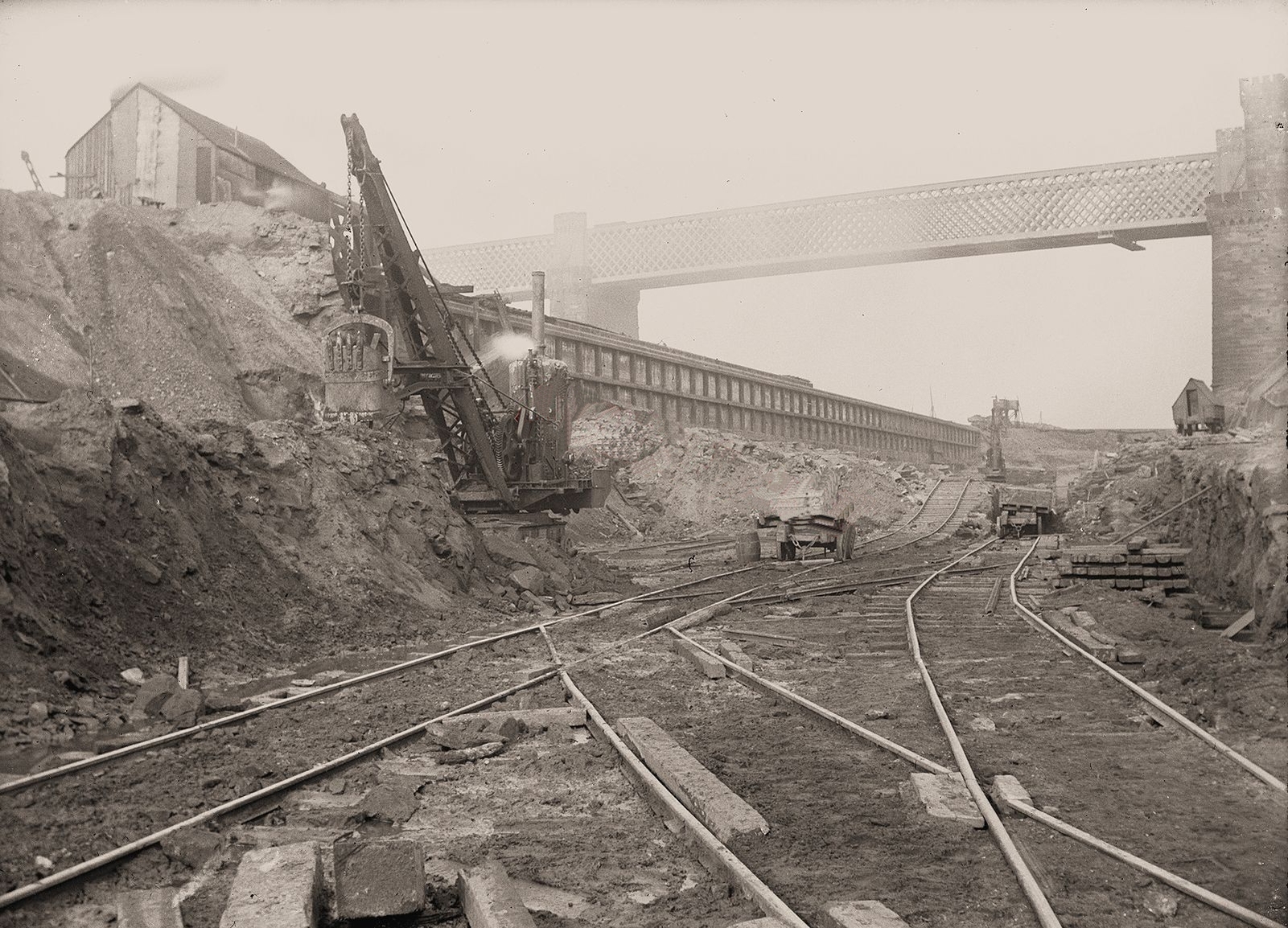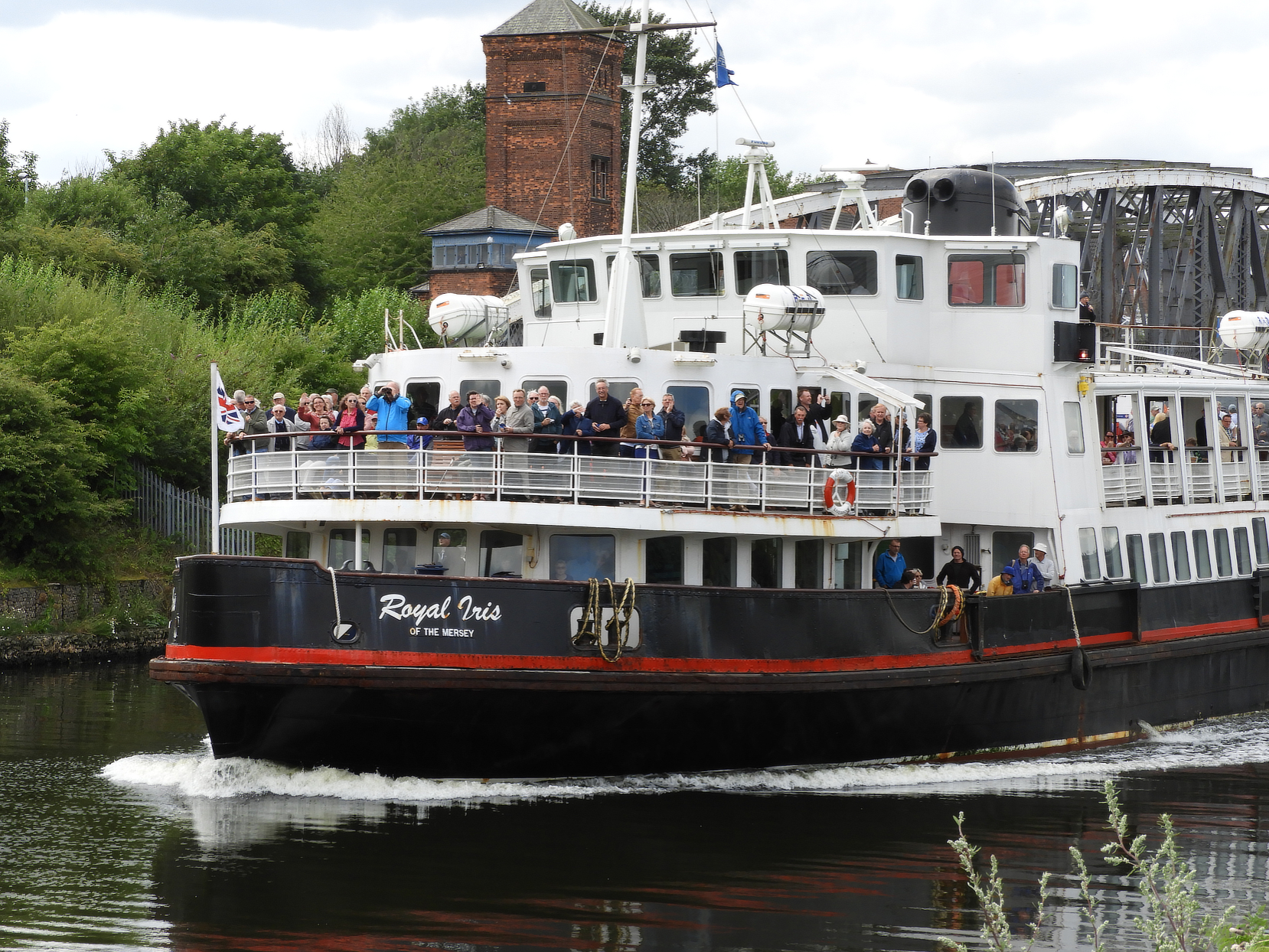The Bridgewater and the Old Quay canals have articles
on other pages
which can be accessed from the 'Main Menu' but Runcorn was also served over the
years by other canals.
The Weaver
Navigation was built primarily to get salt from the Cheshire
hinterland around Northwich and Winsford, to the River Mersey and
Liverpool. It was made by the canalising of the River Weaver,
deepening it and straightening it as required to enable quite large
boats to reach the Mersey at Frodsham, initially using the last mile
or so of the River Weaver, then an extension was added (1810) to bring it
from Frodsham to Weston Point where the Mersey was deeper and less
tide dependent. The canal "locked out" to the Mersey here. A small
lighthouse was erected, almost opposite the one on the Mersey at Hale
Point. This also enabled Weston Point to develop as a port in its own
right, for example flints and china clay, from Cornwall, could be
transhipped and sent via Northwich to the Staffordshire Potteries. In 1882 a factory manufacturing salt from
brine was established at Weston Point by the "Mersey Salt and Brine" Company (the modern plant is now part of the INEOS Company) and shipping facilities to
export the finished salt were provided by the canal and the river.
The Castner-Kellner chemical works, initially manufacturing Chlorine
, Caustic Soda and Bleaching powder, was also developed at Weston Point, (today this is also part of INEOS),
and made use of the canal.
A further small branch was constructed from the
docks at Weston Point to the Bridgewater Canal terminal
basin at Runcorn. Locals referred to this as the Weston
Canal, (but the whole stretch from Frodsham is often referred to
by the same name). A small section of this extension at Weston Point
can still be seen running towards Runcorn but after a few hundred
yards it has been filled in, approx. at the southern boundary of the
modern salt plant of the INEOS Company.
The final canal which came to
Runcorn was the "Daddy of them all". The Manchester Ship Canal
(MSC) was constructed from the Mersey at Eastham to Manchester,
a distance of some 30 miles, towards the end of the 19th.Century. It
was built to enable ocean going ships, of up to some 15,000 tons, to
import/export goods from Manchester and the Lancashire cotton-goods
manufacturing towns without having to pay dues to the port of
Liverpool! At Runcorn the MSC ran from the River Weaver (which now
emptied into this canal rather than directly into the Mersey) past
Weston Point and Runcorn and off through north Cheshire towards
Manchester. On this stretch of the canal a sea wall was constructed
to separate the canal from the River Mersey. It also meant that the
Bridgewater Canal and the Weaver Navigation also "locked out" into the
MSC and not directly to the Mersey.However locks were provided
along the sea wall at both Weston Point and Runcorn to enable small
vessels to access the Mersey from the MSC, and vice versa, without
having to use the MSC to/from Eastham to access the Mersey.
In the mid-20th Cent. the new ocean going ships were too large to use the canal
and its use declined sharply. Now only the occasional small coastal vessel can be seen
on it.
Part of the Weston Canal remaining at Weston Point. The bend to
the right leads to "Miller's lock" (disused), and then to the Weaver Navigation canal.
The termination of the Weaver Navigation canal at Weston Point, (about 1890, before the Manchester Ship Canal arrived ?). The Church (1841) can be seen and the small Lighthouse. The salt works founded in 1882 can be seen background-right. At this time the Weston Point docks had not been developed along the right bank of the canal.
The MSC construction at Weston Point. The new lock entrances from the Weaver Navigation
are on the left, with the lighthouse (now demolished). A lock being constructed in the canal sea wall can be seen, top-centre.
Map showing positions of all the Runcorn canals
The SS San Zeferino passes along the MSC outward-bound towards
Liverpool and under the old Transporter Bridge (demolished early 1960s), probably 1950's.
Picture taken from the "Ethelfleda" railway bridge. Once a ship had
passed under this bridge, going in the direction shown, the canal takes a rather sharp turn to its left
before passing down towards Weston Point.
<
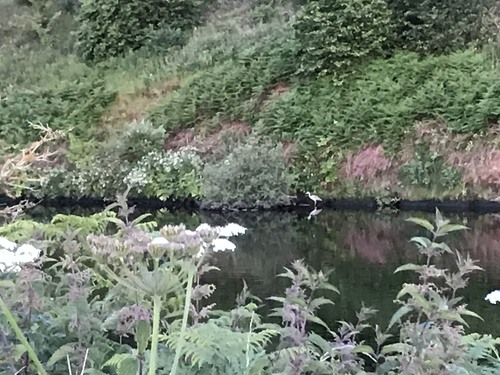
A sight impossible some 50 years ago. A heron fishing on the banks of the MSC at Runcorn (2019).
The MSC construction at the point where the SS Zefarino is about to pass over! On the right, just by the "Ethelfleda" bridge stone support,the last traces of "Castle Rock", the historical position of Ethelfledas Saxon castle, is being excavated away. On the left the large excavator is removing solid sandstone.
The "Royal Iris" on a cruise from Liverpool to Manchester up the MSC. Just passing "Old Quay bridge" at Runcorn (2017).
